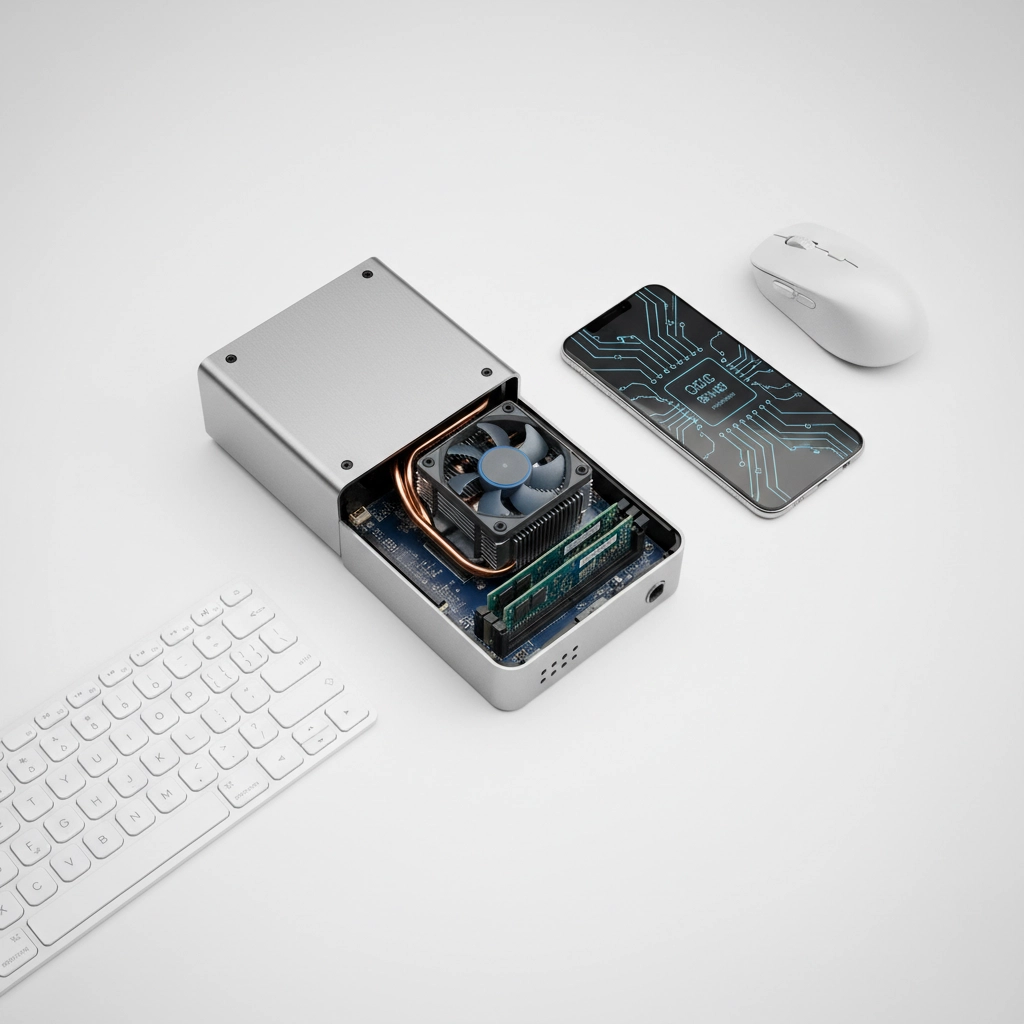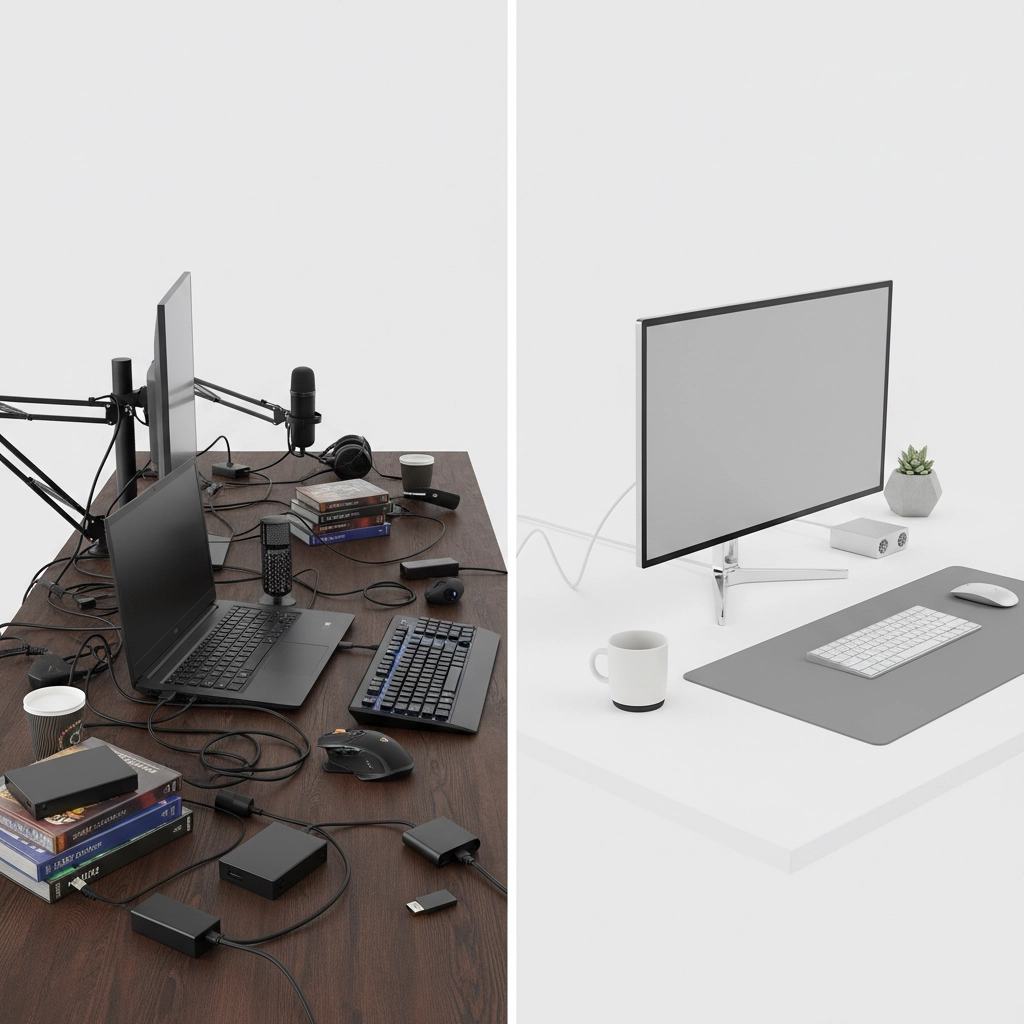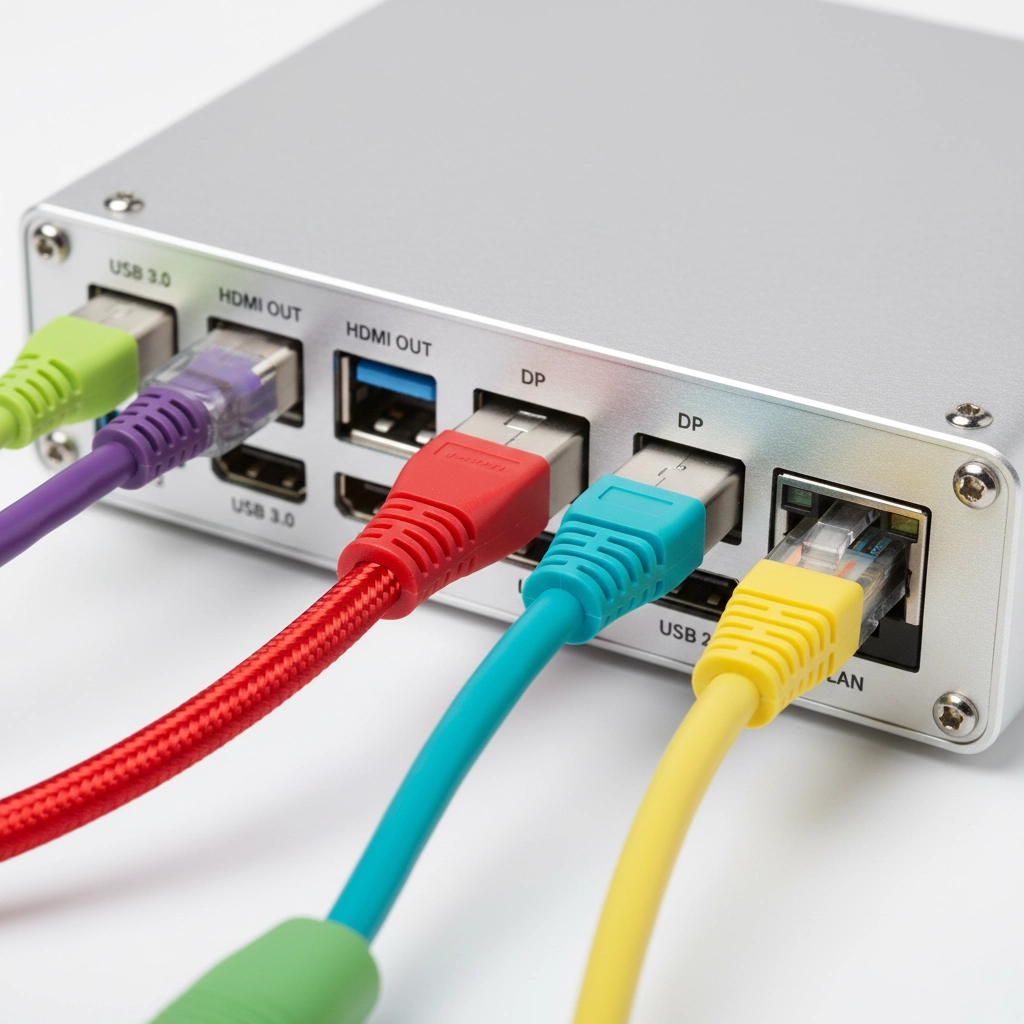Mini PCs vs Laptops: Save Thousands with Intel N100, N97, and N150
- Kwather Wix partner solution
- Oct 3
- 6 min read

The simple idea, Mini PCs vs Laptops.
Here’s the short version: you can spend less and still get your work done. Mini PCs handle everyday tasks like web browsing, email, documents, and video calls without drama. If you mostly sit at a desk, you don’t need to pay extra for a screen, battery, and hinges. You keep the performance, lose the laptop markup, and save on power. This is where Mini PCs vs Laptops comes in.
Cost: quick check
Entry-level laptops often land between R5,000 and R8,000. Mini PCs that do the same day-to-day jobs usually cost R4,500 to R6,500. That gap is where the savings live, and it adds up fast over a year. If you’re replacing a single home setup, the difference can cover a good monitor and still leave change.
Now scale it to a small team. Ten laptops can hit around R80,000, while ten mini PCs come in near R45,000. That is roughly a 75% drop in upfront spend. Many businesses then use part of the savings for better desks, webcams, or extra screens.
Think about a family with two learners at home. Two laptops might push you near R36,000. Two mini PCs with monitors can come closer to R8,000 to R12,000. Same assignments, same video classes, far less strain on the budget.
N100, N97, N150 in plain terms
All three options aim at the same goal: smooth everyday computing. The N97 feels a bit quicker when you bounce between apps or load bigger files. The N100 and N150 an N200 focus on efficiency, which often means cooler, quieter, and in many cases fanless. Pick N97 if you like extra snap, or N100/N150 if you want silent and simple.
A practical way to choose: picture your busiest hour. If you have 12 tabs open, a video call running, and a spreadsheet on the side, any of these chips will cope. If you do light photo edits or frequent multitasking, the N97 gives a touch more headroom. If silence and tiny power bills matter most, N100 or N150 is the safer bet.
What you can do
For Mini PCs vs Laptops, on typical days, you can keep 20+ tabs open and move between email, documents, and chats smoothly. Office apps feel responsive, even with shared drives or cloud docs. 4K streaming plays back cleanly when you take a break. Video meetings stay stable, so your calls don’t turn into troubleshooting sessions.
If you have a side screen, splitting windows for notes and a presentation works fine. You can upload files to cloud storage while browsing without slowdowns. Light photo cropping or PDF editing is comfortable. The experience is predictable and easy to manage.
Power and running costs
Laptops often use 45–65W while you work, because they power a screen and larger components. Mini PCs use much less, so daily costs drop to about R2.50–R4.00 versus R8.00–R12.00 on a laptop. Over a month, that is roughly R165–R240 back in your pocket. Over a year, many users see around R2,000–R2,900 in savings per device.
This matters if you run a small office or lab with machines on all day. Ten units can trim thousands from the annual bill without changing workflows. Less heat also means rooms feel cooler and fans run less. It’s a quiet way to reduce overheads.
Setup options
Home office is simple. Pair a mini PC with a monitor, keyboard, and mouse and you are ready, usually for R8,000–R12,000 all-in. A comparable laptop setup can hit R18,000–R28,000 once you add a stand, a bigger screen, and a dock. If you already own a monitor, the mini PC route gets even cheaper.
In a classroom with 30 seats, mini PCs come in around R135,000 compared to about R540,000 for laptops. That difference can cover extra screens, headsets, or better connectivity. Desks stay tidy, and devices stay plugged in where they belong. Teachers spend less time managing batteries and more time teaching.
For small businesses, think email, documents, video calls, and cloud tools. A mini PC covers these without fuss and leaves budget for a second display or better camera. Reception, finance, and sales can all run on the same standard box. You keep the tools consistent and support stays simple.


Quiet and low maintenance
Many N100 and N150 models run fanless, which means silent operation and fewer parts to fail. No fan also means less dust pulled into the case, so cleaning is easier. The N97 usually includes a quiet fan to keep performance steady under load. In both cases, you spend less time dealing with heat or noise and more time working.
If your desk is in a shared space, silence helps. Calls sound clearer without a constant whirr. You can tuck the mini PC behind a monitor and forget it’s there. Out of the way, out of mind.
Networking
Some models include two network ports, which adds flexibility. You can set up a simple file share, a home server, or a small firewall without buying extra gear. If one connection drops, the other can keep things running. For shops with basic storage needs, this turns a mini PC into a handy utility box.
The footprint stays tiny and the heat output stays low. That makes it easy to slide into a shelf or a small rack. If you grow later, you can repurpose it as a backup or testing device. Nothing goes to waste.
Upgrades
If you want more speed later, add RAM or swap in a bigger SSD. The process is quick and usually costs less than upgrading a laptop. Many laptops use sealed or soldered parts, which limits options and pushes you toward a full replacement. With a mini PC, you extend life instead of starting over. They can even run large graphics cards with addon docks or custom plugins.
This is practical for teams that scale in steps. Start with what you need now, then bump storage when projects grow. You control timing and budget. No rush purchases.

Long-term value
Mini PCs keep getting updates that improve stability and security. Day to day, they remain steady tools that do what you expect. Because the upfront cost is lower, it is easier to forecast refresh cycles. Budgets stay predictable and upgrades feel routine, not disruptive.
If you standardize on one or two models, spares and accessories stay compatible. Training new staff is faster because every station works the same way. Support tickets drop because there are fewer variables. The whole setup stays simple.
Rollout plan
Start with a pilot of five units. Put them on real desks and confirm your workflows and apps behave as expected. Gather feedback on performance, peripherals, and desk layout. Adjust once, then lock the standard.
Next, roll out to a department with around 25 units. Do a short training so everyone knows where files live and how to connect screens and cameras. Tune settings for updates and backups. Set a clear support path so issues resolve quickly.
Finally, move to full adoption. Migrate data, retire older gear, and document the new standard. Track the actual savings in power and support time for the first quarter. Use that data to plan the next refresh.
Environment
Lower power use means less heat and smaller electricity bills. Devices last longer when they run cooler and avoid constant charge cycles. You replace parts instead of whole machines, which reduces waste. Over time, this is better for your budget and for the planet.
If you manage many desks, the difference scales. Rooms stay quieter and HVAC works less. Staff notice the comfort, even if they never see the hardware. Small changes add up.
Proof of value
Adoption is rising in small businesses, schools, and government offices because the math is simple. Teams keep productivity while calls to IT drop, since setups are consistent and fixed. Many deployments break even in about six months and show clear ROI by 12 months. After that, the savings keep compounding with each new seat.
If you are replacing laptops that rarely leave the desk, the switch is straightforward. Keep your monitors and keyboards, swap the box, and carry on. The result is the same work, fewer interruptions, and more room in the budget.
Mini PCs with N100, N97, and N150 cut costs and handle everyday work. They are easy to set up, quiet to run, and simple to upgrade. If you want less hassle and lower bills, this path is hard to beat.

